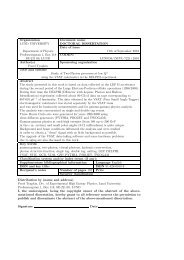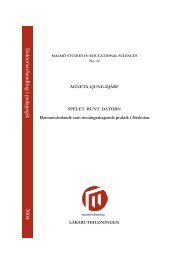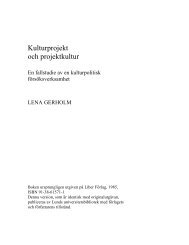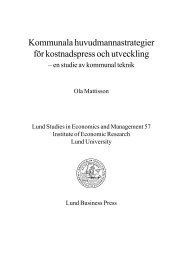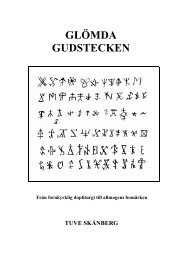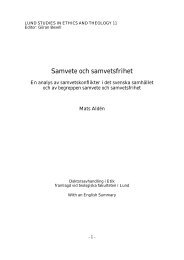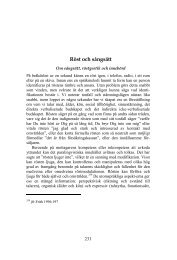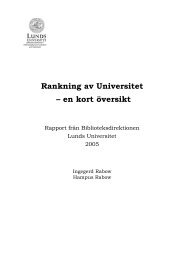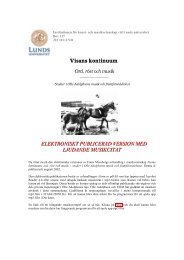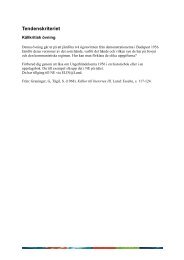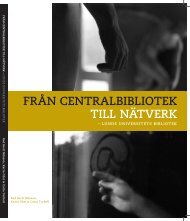Hyperpolarized Nuclei for NMR Imaging and Spectroscopy - Lunds ...
Hyperpolarized Nuclei for NMR Imaging and Spectroscopy - Lunds ...
Hyperpolarized Nuclei for NMR Imaging and Spectroscopy - Lunds ...
Create successful ePaper yourself
Turn your PDF publications into a flip-book with our unique Google optimized e-Paper software.
2 Background<br />
2.1 <strong>NMR</strong> physics<br />
2.1.1 The nuclear spin<br />
A fundamental property of the atomic nucleus is the nuclear spin, described<br />
by the spin quantum number I. Strictly speaking, the nuclear spin is a<br />
purely quantum mechanical quantity, but in terms of classical physics it may<br />
be pictured as an angular momentum — the nucleus rotates around its axis.<br />
Many atomic nuclei (mainly those with an odd mass number) have a nonzero<br />
spin quantum number <strong>and</strong> can be studied with <strong>NMR</strong>, e.g., 1 H, 3 He,<br />
<strong>and</strong> 13 C. <strong>Nuclei</strong> having the spin quantum number I = 0 “do not rotate” <strong>and</strong><br />
cannot be studied with <strong>NMR</strong>. Most nuclei with an even mass number, e.g.,<br />
4 He <strong>and</strong> 12 C belong to this latter group.<br />
Due to its positive charge, a rotating nucleus constitutes a microscopic<br />
ring current, giving rise to a microscopic magnetic moment µµµµ, which can be<br />
pictured as a microscopic compass needle. † When placed in an external<br />
magnetic field B 0, the magnetic moments orient themselves along the magnetic<br />
field; but as opposed to compass needles, only discrete orientations are<br />
allowed. The number of allowed orientations is given by 2I+1, <strong>and</strong> each orientation<br />
is associated with a distinct quantum energy E m:<br />
4<br />
Em =−µµ ⋅ B0 = mγh B0<br />
[1]<br />
where m =−I, −I+1, … , +I is the magnetic quantum number, <strong>and</strong> the constant<br />
γ is called the “gyromagnetic ratio,” characteristic of each atomic nucleus.<br />
The magnetic moment µµµµ cannot be oriented parallel to B 0, <strong>and</strong> will<br />
thus experience a torque trying to align µµµµ with B 0. In analogy with a top rotating<br />
in the earth’s gravity field, this torque will cause µµµµ to revolve around<br />
B 0 with an angular frequency ω, denoted the Larmor frequency:<br />
ω = γB0.<br />
[2]<br />
The nuclei investigated in this thesis ( 3 He, 13 C, <strong>and</strong> 129 Xe) all have the<br />
spin quantum number I = 1<br />
2 , <strong>and</strong> thus two orientations are possible:<br />
namely, parallel to B0 (“spin up”) <strong>and</strong> anti-parallel to B0 (“spin down”). By<br />
† Bold typeface denotes vectors.



